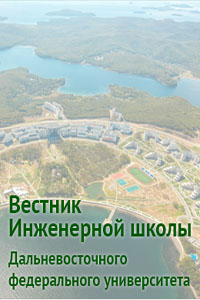The method of assessing the condition of roads
DOI:
https://doi.org/10.24866/2227-6858/2024-4/139-150Keywords:
diagnostics of roads, state of roadsAbstract
To determine the need for repair measures, types of repair measures and their priority on the highway network, it is necessary to assess their current condition. Various studies have proposed enlarged criteria for assessing the condition of the highway, mainly based on longitudinal flatness and the presence of pavement damage: PCI coating condition index, SCI surface condition index, OPCI general index of the condition of urban streets and roads, PSCI surface condition index, etc. In the Russian Federation, the condition of highways is assessed by determining the values of longitudinal evenness, coefficient of adhesion, coating condition and modulus of elasticity. At the same time, determining the modulus of elasticity for highways of regional and local significance within the framework of annual diagnostics in conditions of limited funding is ineffective and impractical. The authors introduced a comprehensive indicator of the level of maintenance, based on the values of the coefficient of adhesion, longitudinal evenness and the condition of the coating. The use of this indicator will improve the efficiency of planning repair activities on the highway network. A method for assessing the condition of highways consisting of two stages is proposed. At the first stage, the level of operational maintenance is determined and local areas with significant deformations and failures are identified. At the second stage, the causes of the development of significant deformations and destructions are determined by conducting geological, hydrometric and geodetic studies. This approach will allow in conditions of limited funding. reduce the cost of annual road diagnostics without reducing its effectiveness.
References
Кореневский В.В., Кнышов А.А., Мордик Е.А. Оптимизация методов диагностики и оценки технического состояния автомобильных дорог // Гуманитарные, социально-экономические и общественные науки. 2019. № 9. С. 198–202.
Просверяков В.А. Оценка транспортно-эксплуатационного состояния участка автомобильной дороги с усовершенствованным капитальным типом покрытия // Форум молодых ученых. 2019. № 11(39). С. 350–354.
Мартьянов В.И., Степаненко А.А. Проектирование баз данных автодорожной отрасли на основе теоретико-множественного анализа сложных систем // Известия вузов. Инвестиции. Строительство. Недвижимость. 2022. Т. 12, № 2(41). С. 214–223.
Слободчикова Н.А., Лофлер М. Методики подбора составов грунтов, укрепленных известью, для дорожного строительства // Известия вузов. Инвестиции. Строительство. Недвижимость. 2018. Т. 8, № 2. С. 141–147.
Васильев А.П. Принципы прогнозирования транспортно-эксплуатационного состояния дорог // Автомобильные дороги. 1993. № 1. С. 8–10.
Al-Omari B., Darter M.I. Relationships Between IRI and PSR: Interim Report // Illinois Department of Transportation. 1992. P. 71.
Демишкан В.Ф. Совершенствование управления состоянием автомобильных дорог в условиях ограниченных ресурсов: дис. … канд. техн. наук. Харьков, 2000. 171 с.
Ермошин Н.А., Романчиков С.А., Аверьянов Д.А. Имитационное моделирование риска разрушения дорожных конструкций в межремонтный период // Путевой навигатор. 2022. № 50(76). С. 30–41.
Бирюков Ю.А., Бирюков А.Н., Бирюков Д.В., Бирюков Н.А., Добрышкин Е.О., Бондарев А.В. Способ дистанционного контроля состояния конструкций и устройство для его осуществления. Патент на изобретение RU 2734446 C1, 16.10.2020.
Маругин В.М., Бирюков А.Н., Лазарев А.Н., Мороз А.М., Чмырёв В.А. Экспертные формы контроля (на примерах оценки строительных объектов и самооценки строительных предприятий): монография. СПб., 2012.
Санников С.П., Замятин А.В., Жигайлов А.А., Маслов Д.В. Земляное полотно автомобильных дорог на заболоченных территориях с использованием опорной обоймы // Путевой навигатор. 2019. № 41(67). С. 44–48.
Talvik O., Aavik A. Use of FWD deflection basin parameters (SCI, BDI, BCI) for pavement condition assessment // Balt. J. Road. Bridg. Eng. 2009. № 4. Р. 196–202. DOI: https://doi.org/10.3846/1822-427X.2009.4.196-202
Shah Y.U., Jain S.S., Tiwari D., Jain M.K. Development of Overall Pavement Condition Index for Urban Road Network // Procedia-Social and Behavioral Sciences. 2013. P. 332–341. DOI: https://doi.org/10.1016/j.sbspro.2013.11.126
Mccarthy J., Fitzgerald L., Mclaughlin J., Mulry B., O’brien D., Dowling K. Rural Flexible Roads Manual-Pavement Surface Condition Index. Vol. 1 of 3 // Department of Transport, Toursim and Sports. 2014.
Piryonesi S.M., El-Diraby T.E. Examining the relationship between two road performance indicators: Pavement condition index and international roughness index // Transportation Geotechnics. 2021. P. 26. DOI: https://doi.org/10.1016/j.trgeo.2020.100441
Arhin S.A., Williams L.N., Ribbiso A., Anderson M.F. Predicting pavement condition index using international roughness index in a dense urban area // J Civ Eng Res. 2015. № 5. Р. 10–17. DOI: https://doi.org/10.5923/j.jce.20150501.02
Lin J.-D., Yau J.-T., Hsiao L.-H. Correlation analysis between international roughness index (IRI) and pavement distress by neural network // Transportation Research Board. Washington DC., 2003.
Chandra S., Sekhar C.R., Bharti A.K., Kangadurai B. Relationship between pavement roughness and distress parameters for Indian highways // J Transp Eng. 2013. № 139. Р. 467–475. DOI: https://doi.org/10.1061/(ASCE)TE.1943-5436.0000512
Park K., Thomas N.E., Wayne L.K. Applicability of the international roughness index as a predictor of asphalt pavement condition // J Transp Eng. 2007. № 133. Р. 706–709. DOI: https://doi.org/10.1061/(ASCE)0733-947X(2007)133:12(706)
Dewan S.A., Smith R.E. Estimating international roughness index from pavement distresses to calculate vehicle operating costs for the San Francisco Bay Area // Transp Res Rec J Transp Res Board. 2002. № 1816. Р. 65–72.
Downloads
Published
Issue
Section
License
Copyright (c) 2024 Far Eastern Federal University: School of Engineering Bulletin

This work is licensed under a Creative Commons Attribution 4.0 International License.

